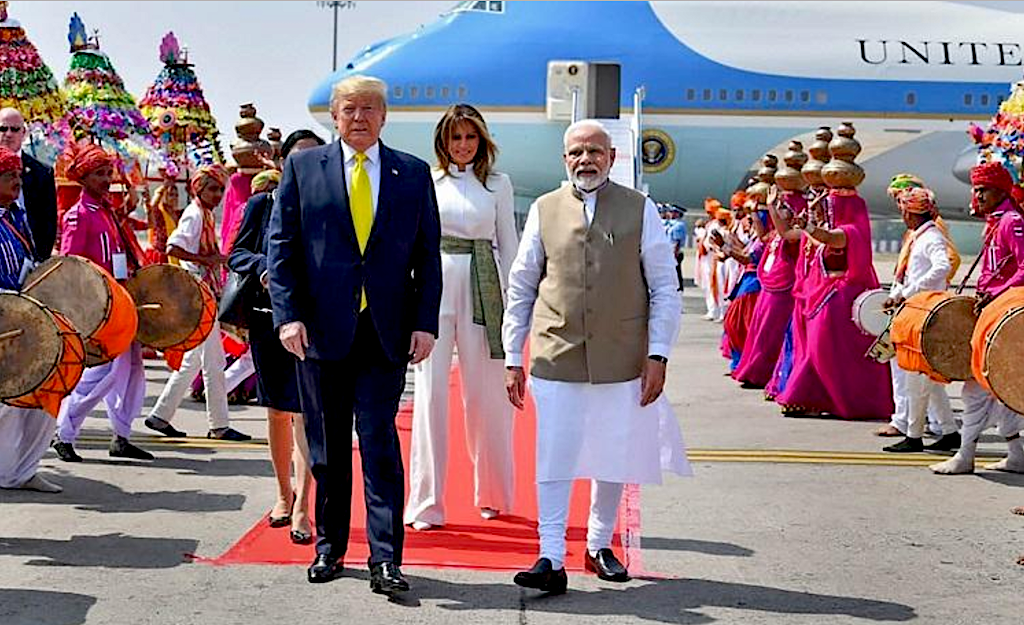Farhat Haque for BeyondHeadlines
The preferential trade treatment that India relished for over a long period of time; was abducted by president Trump last year. Trade between two nations is subject to protectionism; that is the exports of one are taxed (tariff) by importing countries; this is done either for earning revenue or protecting own producers from foreign (exporting country) producers. Preferential trade treatment means that these taxes not being charged; that India was sheltered in the US along with many developing nations.
To understand why and how developing nations are given such exemptions; one needs to know the trade in antiquity. Around sixteenth century the idea of mercantilism was prevalent and that the exports were a source of income and imports were considered vicious. This highly regulated approach was the nationalist approach. The view to attain surplus in the balance of trade, import would drain wealth of a nation to foreign nations, so tariffs and quotas were levied. The colonial masters were nothing but stout propagators of mercantilism.
After World War II three organizations were formed simultaneously IMF, IBRD and GATT (now known as WTO). GATT was basically formed to comprehend the economic gains from trade. Built on three principles of Non-discrimination, Reciprocity and Transparency; the non-discrimination/ MFN (Most Favoured Nation) clause was most important as the bilateral negotiations were to be converted into multi-lateral negotiation assuring neutrality on part of developed nations; so that they not only reduce tariff for their core (developed) trading partners.
GATT also asked member nations to do away with tariff and developing nations were at liberty to do so or not. With time the calculative intellect of these developed nations started innovating Non-Tariff Barriers (NTB) relating to health, safety, sanitation and security. This in laymen’s language can be sated as the developed nations raised the standard of products exported by developing nations and imported by them.
We remember the spices, carpets medicines and many Indian exports sent back to pavilion on grounds of such NTB barriers. But to some extent were at ease being given tariff concessions under GSP (Generalized System of Preferences) by US, Canada, EU, Japan, Australia and New Zealand. The US allowed $ 5.6 billion duty exports of India approximately the top most exporting destination of India, thus the largest contributor of balance of payment surplus as the payment received in dollar through our exports is the prime source of foreign exchange.
Then comes the question of our MSME’s (micro, small and medium enterprises). The MSME in India is of great importance and has contributed towards the growth economy, job creation and entrepreneurship arousing. With around 633.88 lakh operational MSME units, including the unorganised, have created around 11.10 crore jobs (GoI, 2018a).
After President Trump’s decision the Indian representative, Puneet R. Kundal, in his address had alleged that a withdrawal would cause “irreparable damage” to the exports of India, especially impact the employment and MSME sector in a developing country like India.
Meanwhile, some evaluators say that this step by US will merely affect India, but the research says the contrary. Out of a total 12 top GSP exports product groups, seven will be adversely affected due to the withdrawal.
| Product group HS Code & Description | Likely impact of GSP withdrawal |
| 29 (organic chemicals) | Negative |
| 84 (nuclear reactors, boilers, machinery and mechanical appliances; parts thereof) | Minimal or neutral |
| 87 (vehicles, other than railway or tramway rolling stock, and parts and accessories thereof) | Minimal or neutral |
| 73 (articles of iron or steel) | Negative |
| 39 (plastics and articles thereof) | Negative |
| 85 (electrical machinery and equipment and parts thereof; sound recorders and reproducers, television recorders and reproducers, parts and accessories) | Negative |
| 42 (articles of leather; saddlery and harness; travel goods, handbags and similar containers; articles of gut (other than silkworm gut)) | Negative |
| 40 (rubber and articles thereof) | Minimal |
| 68 (articles of stone, plaster, cement, asbestos, mica or similar materials) | Negative |
| 94 (furniture; bedding, cushions etc.; lamps and lighting fittings not elsewhere specified or included; illuminated signs, nameplates and the like; prefabricated buildings) | Minimal or neutral |
| 83 (miscellaneous articles of base metal) | Negative |
| 76 (aluminium and articles thereof) | Minimal or neutral |
Source: Mukhopadhyay, A., & Sarma, N. (2020). US Trade ‘Realignment’: The Impact of GSP Withdrawal on India’s Top Exports to the United States. Occasional Papers.
The above study also suggested the policy makers to analyse the negative aspects and its impact on domestic producers. As the NTB’S will already be debilitating the Indian exports.
Yet again, President Trump has removed the status of India as a developing nation in WTO which would confiscate India from special preferences (for developing nations) to receive help poverty eradication, employment generation and to assimilate itself into the global trading system while India was attaining as a developing nation, just because of the size of GDP. When the per capita income is so demoralizing we cannot make them apprehend more by building walls.
Clearly, the elections of US are near and to show its citizens the new wave protectionism (not only for trade but also H1b Visa) on one hand and showing diplomatic ties in other just to ensure a big market for the US with huge population of India. Also, it was alleged that due to India not opening its market for the US; but in times when FDI inflow is allowed almost in every sector how can this be true. Isn’t it the return of mercantilism in new era? Whereas, the US is also interested to decide bilateral relations of India; for example, the tension between them and Iran an ultimatum was released on us not to import oil from its rivals. For the sake of our autonomy, we can; learn from our past as to why PL-480 had to be abandoned.
(Author is an academician based in New Delhi. She can be contacted at farhathaque0525@gmail.com)
References:
Mukhopadhyay, A., & Sarma, N. (2020). US Trade ‘Realignment’: The Impact of GSP Withdrawal on India’s Top Exports to the United States. Occasional Papers.
Tripathy, I. G., & Kumar, P. (2019). Challenges of Indian MSME Exporters: A Review. SEDME (Small Enterprises Development, Management & Extension Journal), 46(3), 189-195.
GOI. (2018a). Indian MSMEs marching ahead: Achievements 2014–18. New Delhi: Ministry of Micro, Small & Medium Enterprises.























